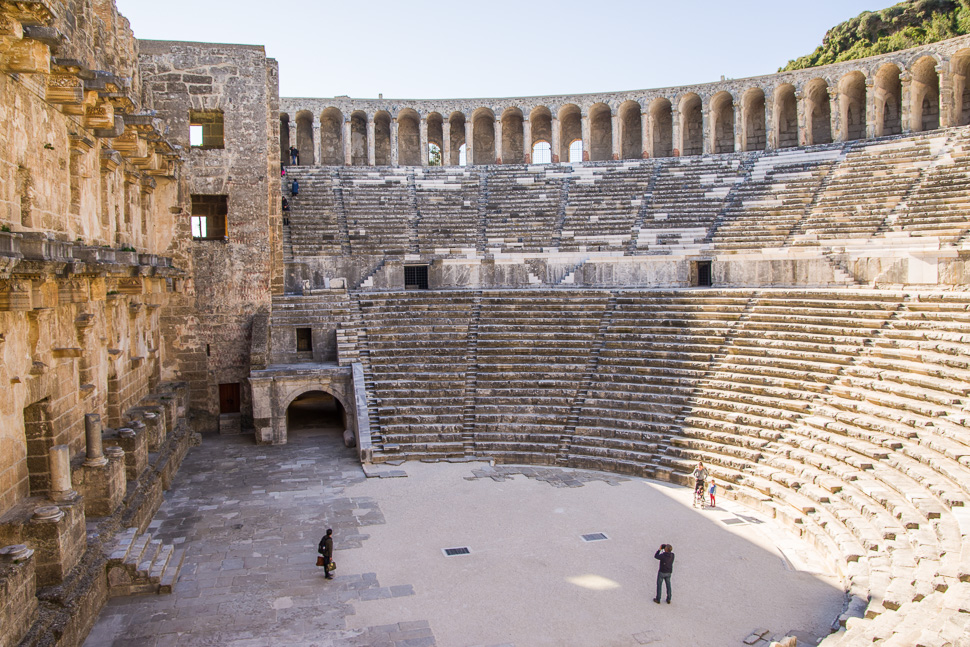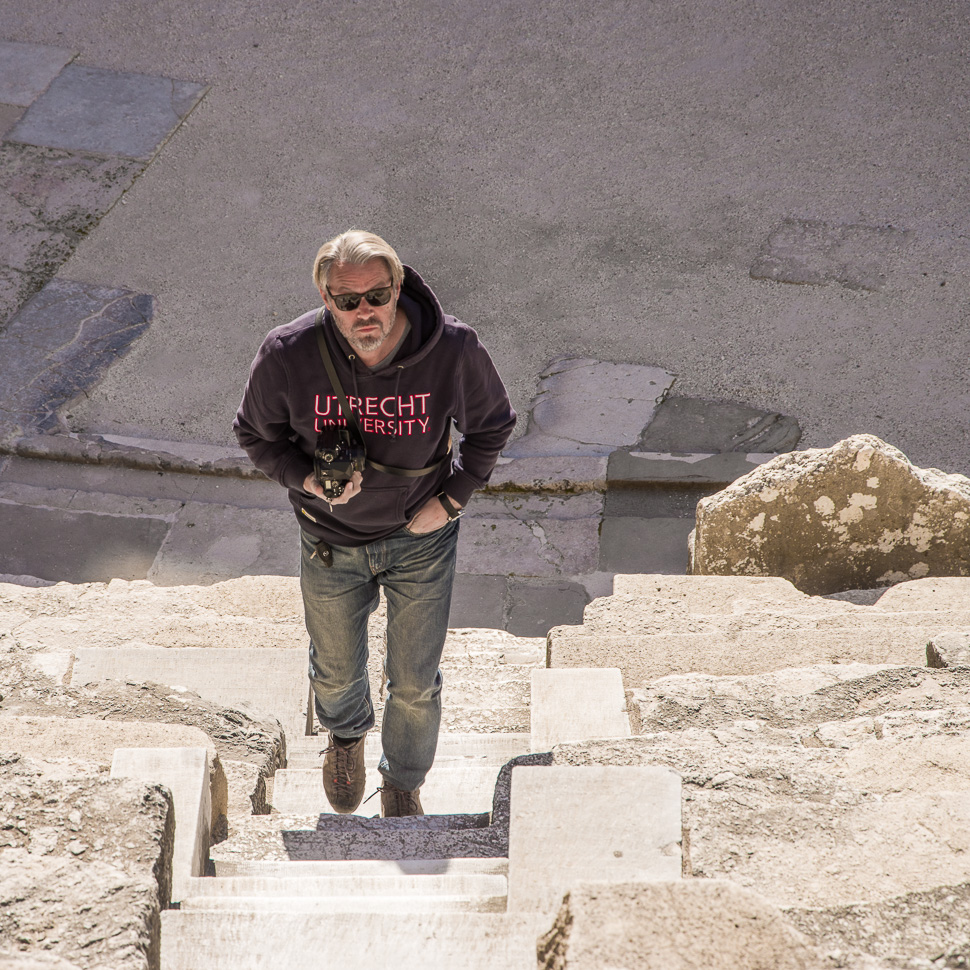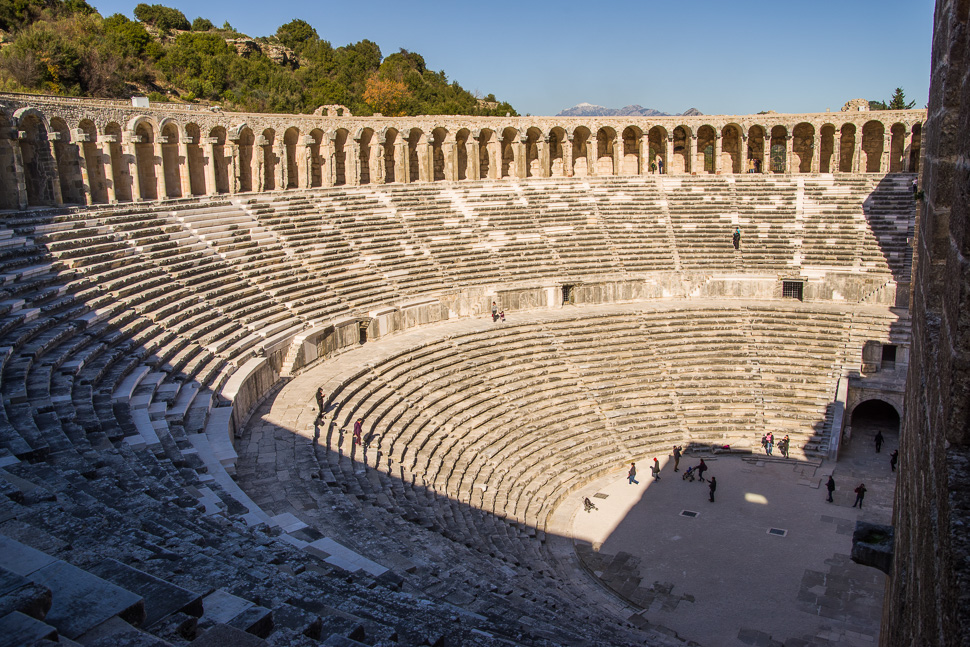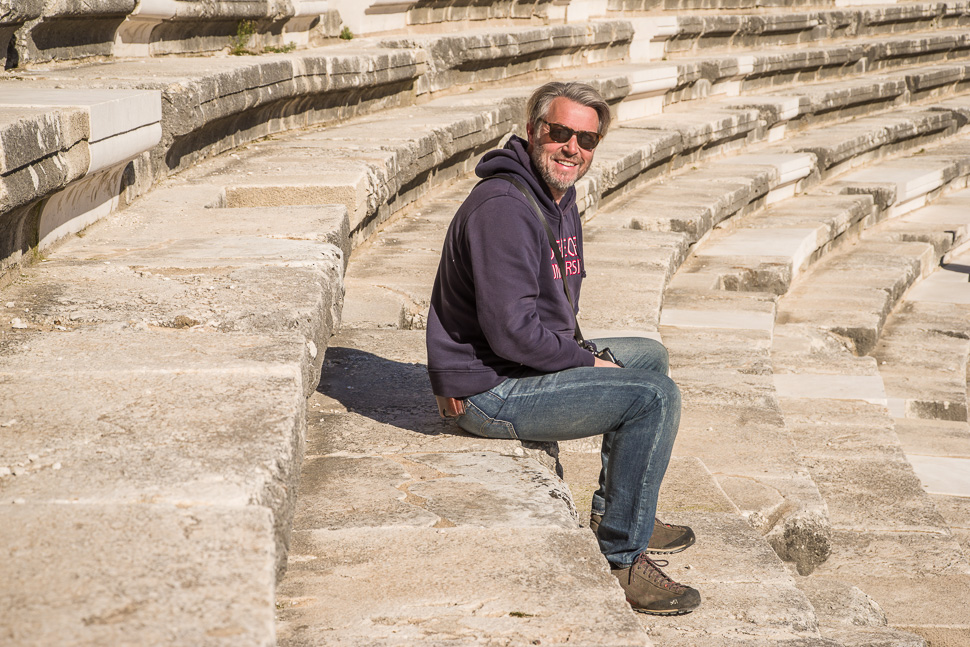Big cities once dominated the area east of Antalya. One of them was Aspendos, which fascinated us with its nearly complete theatre, which is said to be the best-preserved theatre of antiquity. But there was more that the Romans had left here, and we went to explore it.
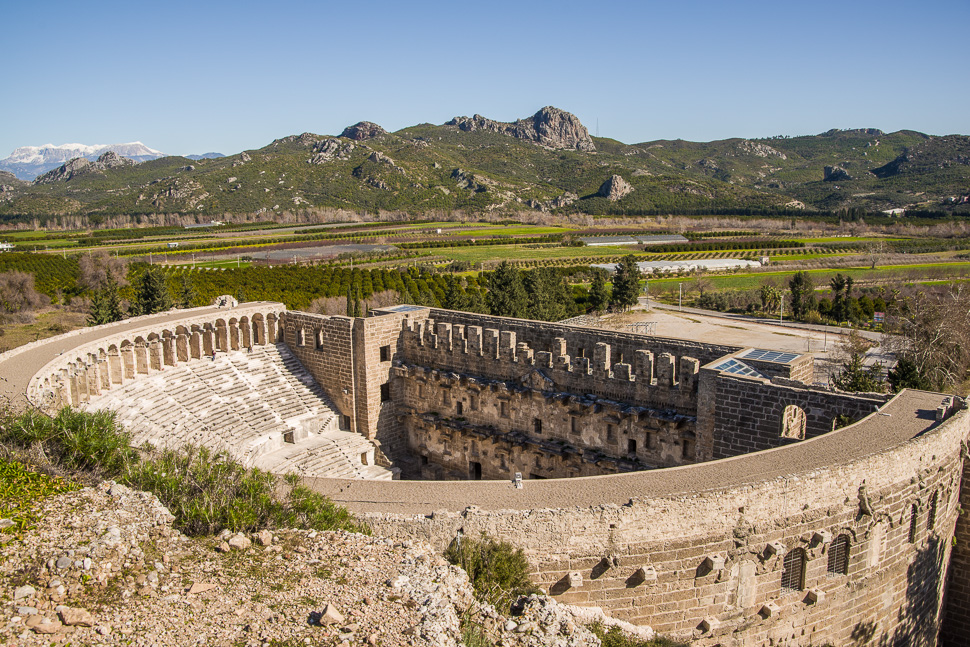 |
| Theatre of Aspendos |
Like Perge and Side, Aspendos was founded at the height of the Hittite Empire.
When Alexander the Great approached Aspendos in 333 BC, the city bought itself free for a price of 50 gold talents (approx. 1000 kg gold) and horses. But since Aspendos did not want to pay, Alexander returned, occupied the city, now demanded 100 gold talents and 4000 horses and took rich citizen hostage.
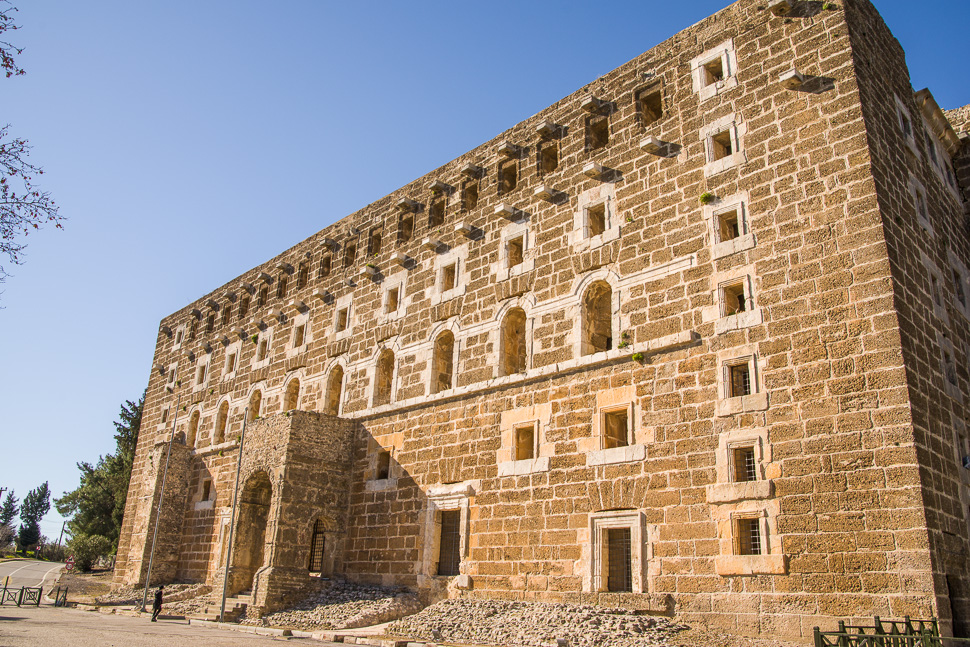 |
| Front of the theatre |
An 8 metre sloping reflective wooden ceiling over the stage has been lost over time, but post holes for 58 masts can still be seen in the upper level of the theatre. These masts supported an awning that could be pulled over the audience to provide shade.
The city had become rich with salt from the Kreoia lake. The lake dried up in summer and made it possible to extract salt. Aspendos was also famous for horse breeding and local wine growing. In the 7th century AD, the river and thus the main trade route silted up. In addition, the Arab incursions made the situation increasingly uncertain. The city lost its importance and shrank to a small village. However, that changed when the Seljuks ruled large parts of Turkey in the 13th century. They built an important caravanserai here and not only because of this they pulled trade routes back into town. The Seljuks used the theatre and repaired it. After the fall of the Seljuk Empire, Aspendos shrank again to an insignificant village until archaeology and tourism rediscovered the place and, above all, the theatre, which is so well-preserved thanks to the Seljuks.
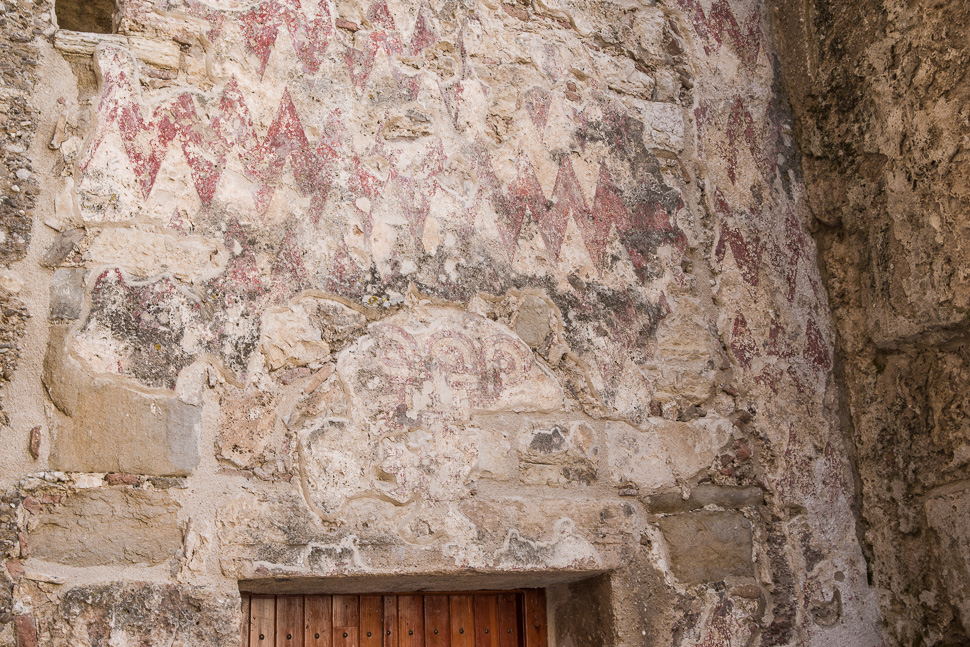 |
| Painted wall next to the stage |
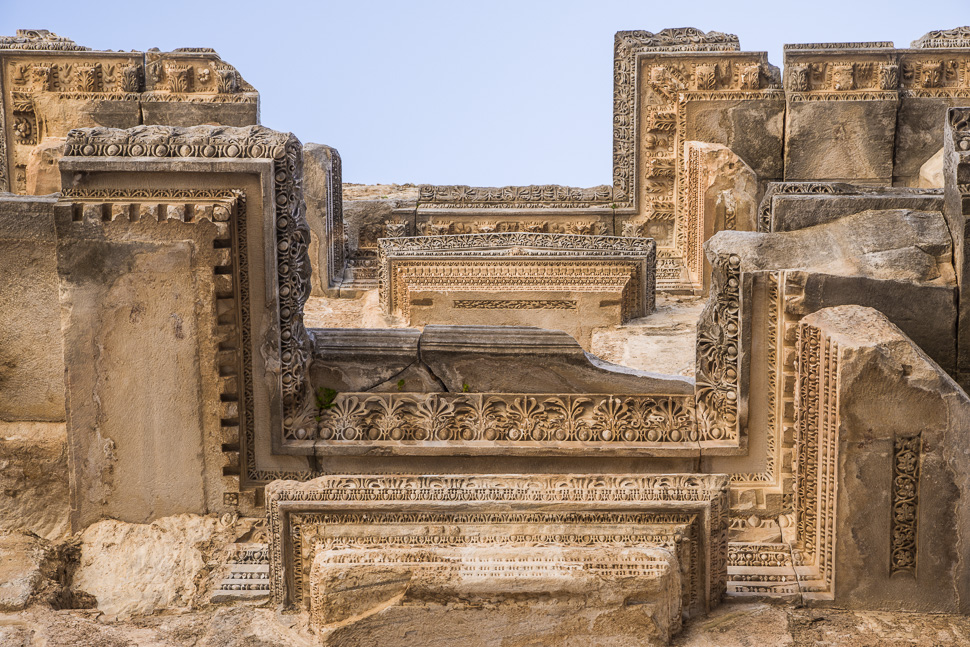 |
| Richly decorated stage |
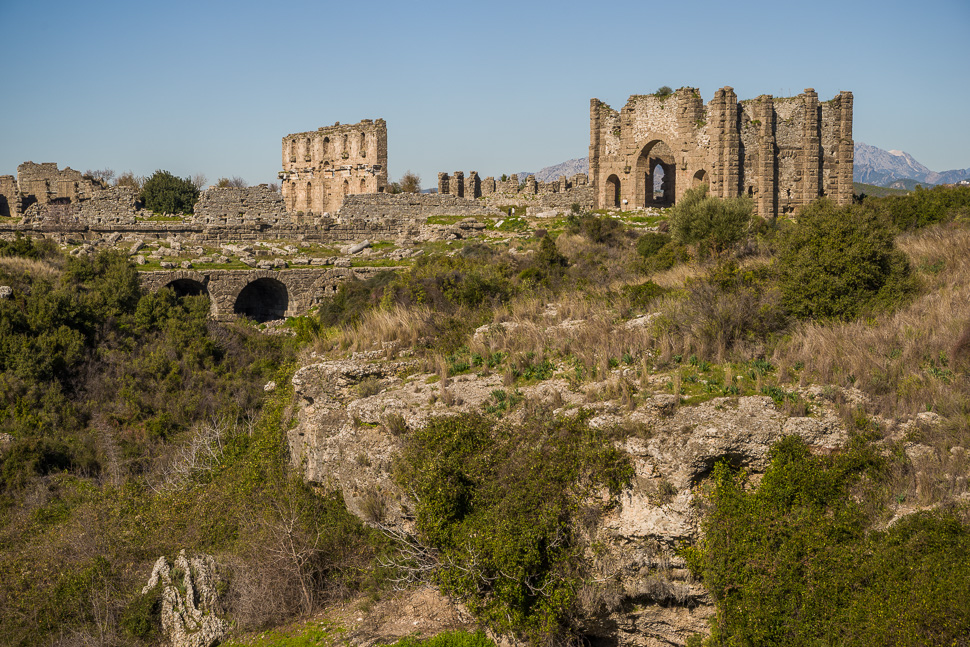 |
| View over Aspendos with the basilica |
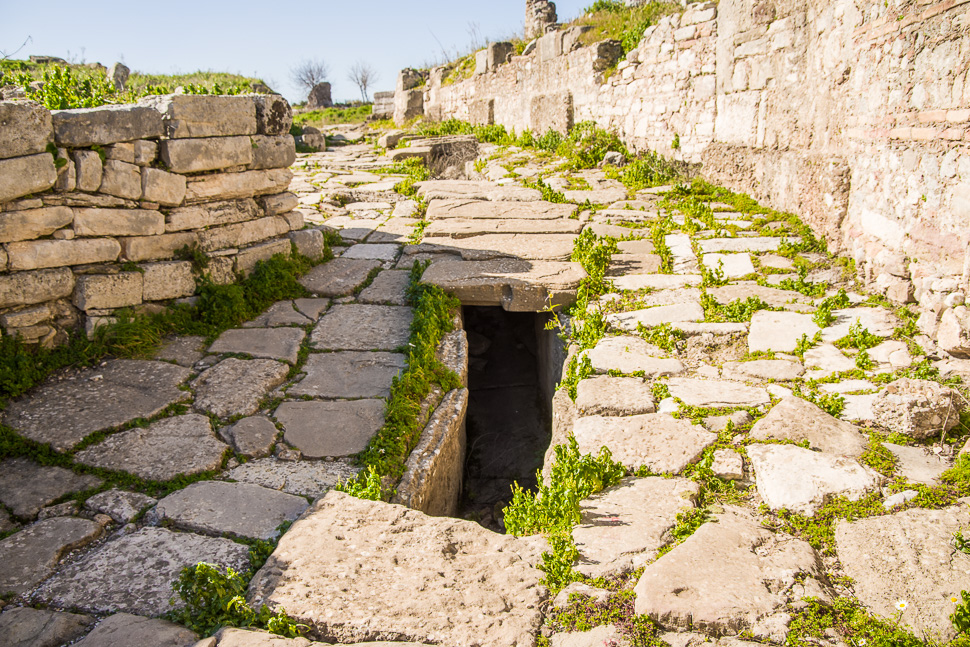 |
| Street with sewage system |
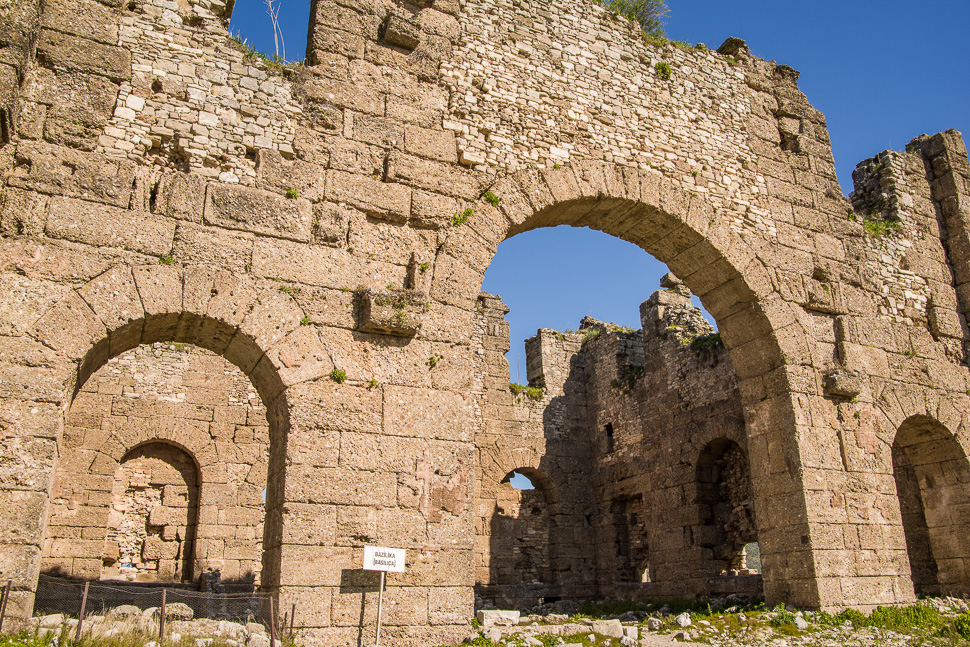 |
| Basilica |
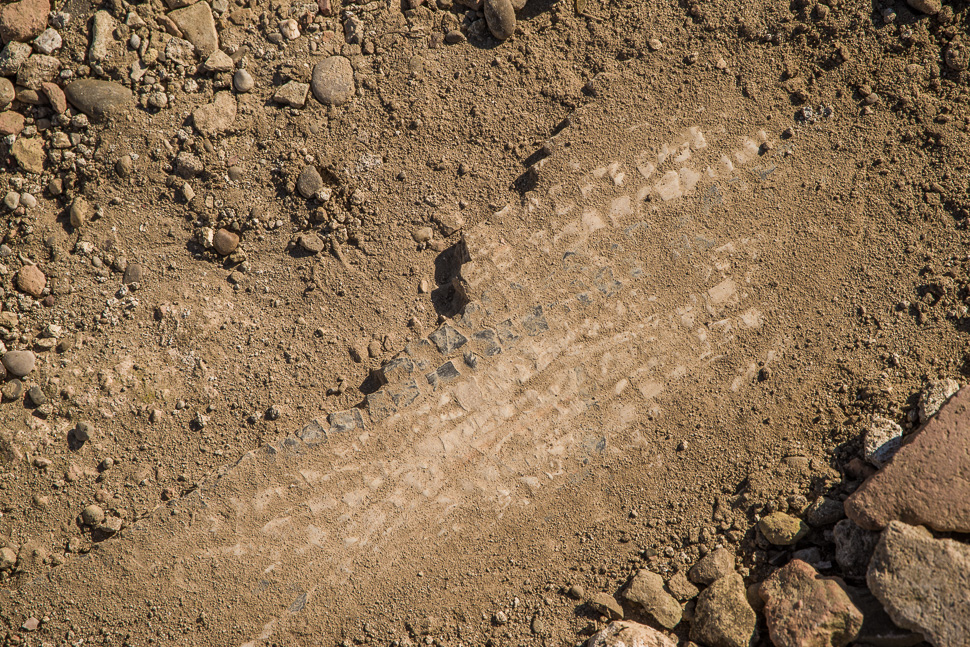 |
| Pieces of a mosaic floor just somewhere on the path |
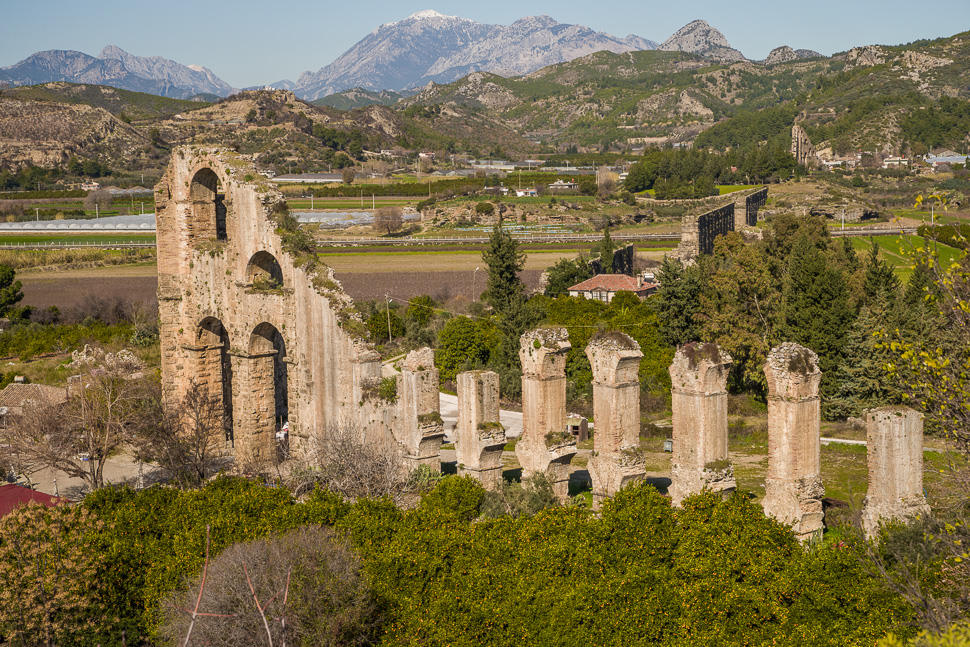 |
| First tower in the back, low aqueduct crossing the valley and second tower close to the acropolis |
The Roman aqueduct is one of the most impressive water conveyance structures remaining from the Roman era. It had to bring water across an adjacent valley to the top of the acropolis.
Water from the mountains, 17 kilometres to the north, was carried to within 2 kilometres of the city in a conventional aqueduct channel. The last 1.7 kilometres, between the foothills to the immediate north and the acropolis, was a complex combination of elevated sections and inverted siphons. The most eye-catching structures are the two massive water towers.
From the acropolis, across a small valley or depression, is the first tower (farthest away). This two-tiered structure bends slightly in the middle to form a 175-degree angle. It is assumed that the top of the tower was equipped with an open tank. The arches of the tower slope down on both sides, indicating that the tower held a receiving tank for the first inverted siphon and the header for the second. The hydraulic structure is called an inverted siphon because the water follows the path of a “U” rather than the initially upward course (resembling an “n”) of a true siphon.
The second siphon, which connects the two towers and stretches over 900 meters on a straight line, is carried on a row of arches (also called a venter) 15 meters high. The purpose of the venter was to reduce the head, or the drop from the header tank to the bottom of the inverted siphon. This section of the aqueduct was 5.5 meters wide, leading some to speculate that it was also used as a roadway when the ground in the valley became marshy.
After crossing the valley, water flowed up to the second tower, which bends to form a 125-degree angle. This tower constitutes the transition between the second and third siphon. It also probably had a tank at the top. From the second tower, water was conveyed a short distance to the city by a third inverted siphon, again carried on arches. Each tank on the inverted-siphon system was a little lower than the preceding tank because friction in the pipes slowed the water, the difference in elevation is the hydraulic gradient.
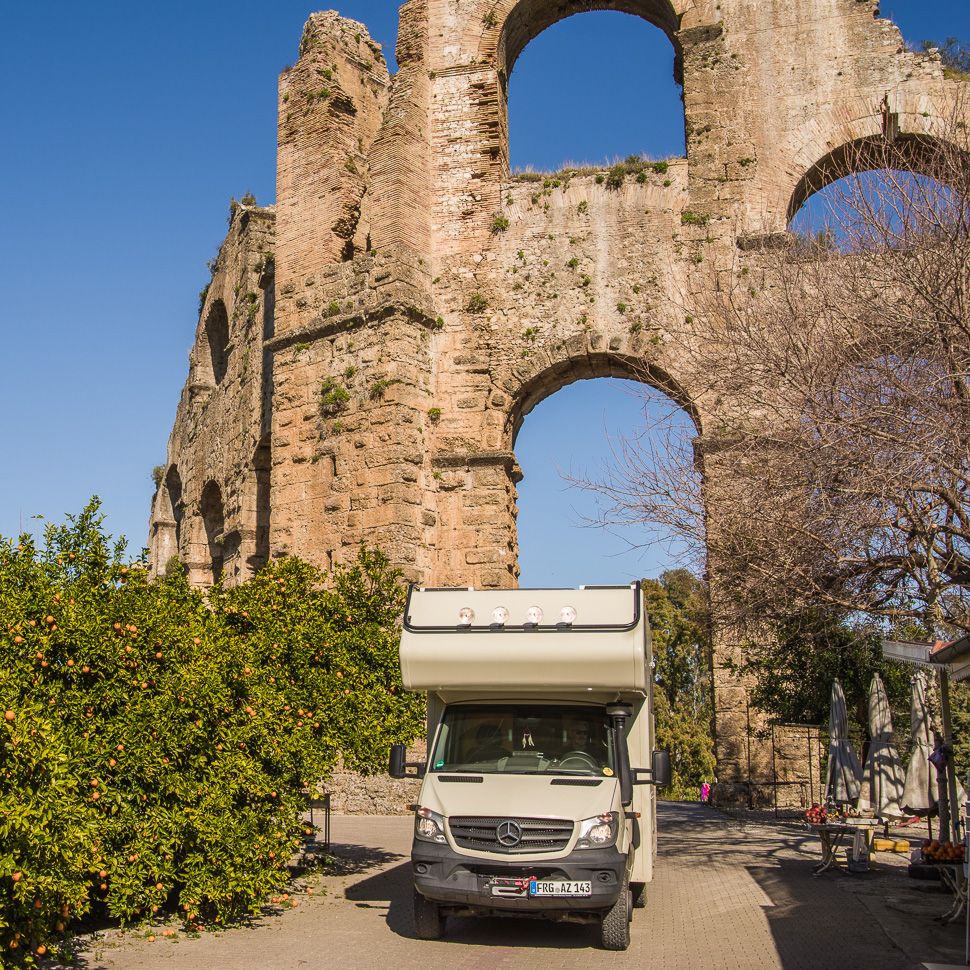 |
| Second water tower in front of the acropolis |
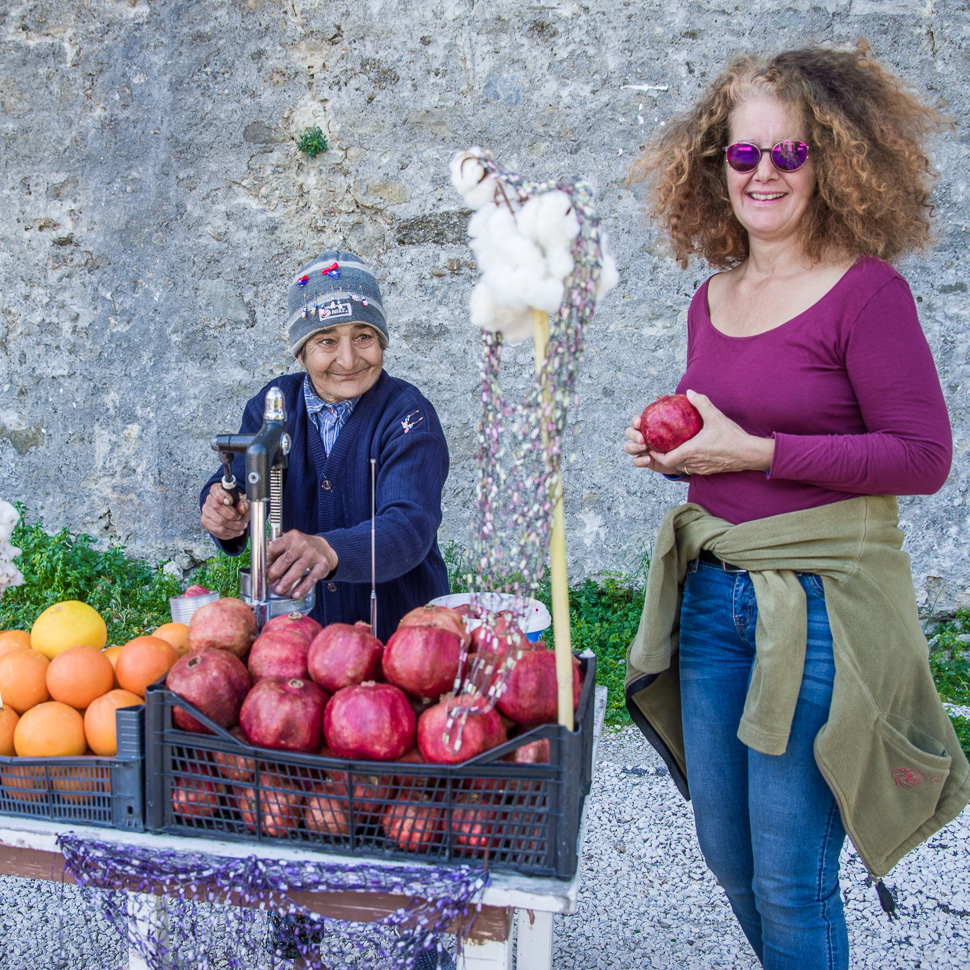 |
| Orange and pomegranate juice next to the aqueduct |
 |
| Flower of the Day |
 |
| Sunset at the beach |


